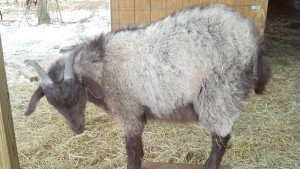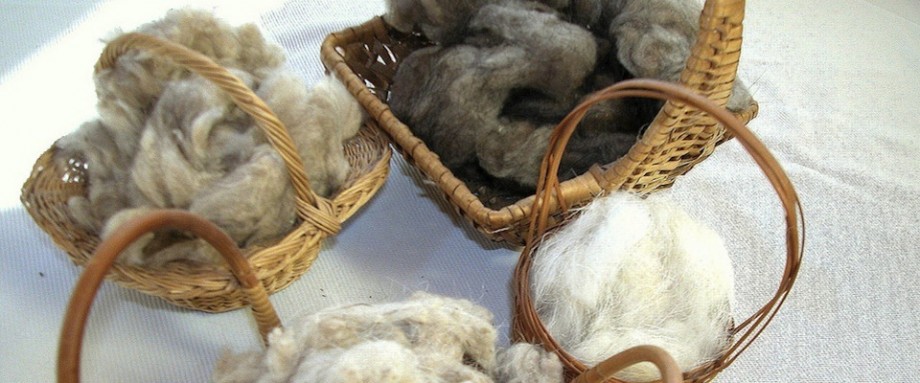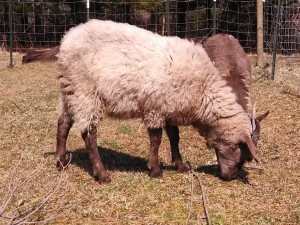For fiber availability and pricing, please:
call 330-262-6109 or
email info@BuckeyeRidgeFarm.com
We proudly offer our goats’ raw, unprocessed cashmere fiber for spinning, felting, and other fiber craft use.
- Seasonal availability
- Various natural colors (pure white is rare)
- Dehaired fiber is sometimes available
Spanish goats shed cashmere wool, a luxurious fiber ideal for felting, crafting, or spinning to knit, crochet, or weave.
Common usage defines the fiber as a wool but in fact it is a hair, and this is what gives it its unique characteristics as compared to sheep’s wool.
Fiber is Measured in Microns and in the In the United States. The average diameter of the fiber of cashmere product cannot exceed 19 microns.
 Cashmere-bearing goats produce a double fleece, consisting of a fine, soft undercoat, or underdown, of hair, mingled with a straighter, and much coarser outer coating of hair called guard hair. The fine underdown must be dehaired to be sold and processed further. Dehairing by hand or by a mechanical process separates the coarse hairs from the fine hair. If done by hand, dehairing can be very time-consuming.
Cashmere-bearing goats produce a double fleece, consisting of a fine, soft undercoat, or underdown, of hair, mingled with a straighter, and much coarser outer coating of hair called guard hair. The fine underdown must be dehaired to be sold and processed further. Dehairing by hand or by a mechanical process separates the coarse hairs from the fine hair. If done by hand, dehairing can be very time-consuming.
After dehairing, the resulting cashmere is ready for dying and conversion into textile yarn, fabrics and garments.
Cashmere is often blended with alpaca, angora or other soft micron fibers into yarn and can be dyed various colors.
We harvest cashmere in the spring and summer months. Unlike sheep shearing, which uses electric shears to cut the fiber from the animals, we harvest cashmere by combing it out. The goats really want it off and if not harvested soon enough, they rub it off on the fences.
We may offer cashmere yarn in the future.


